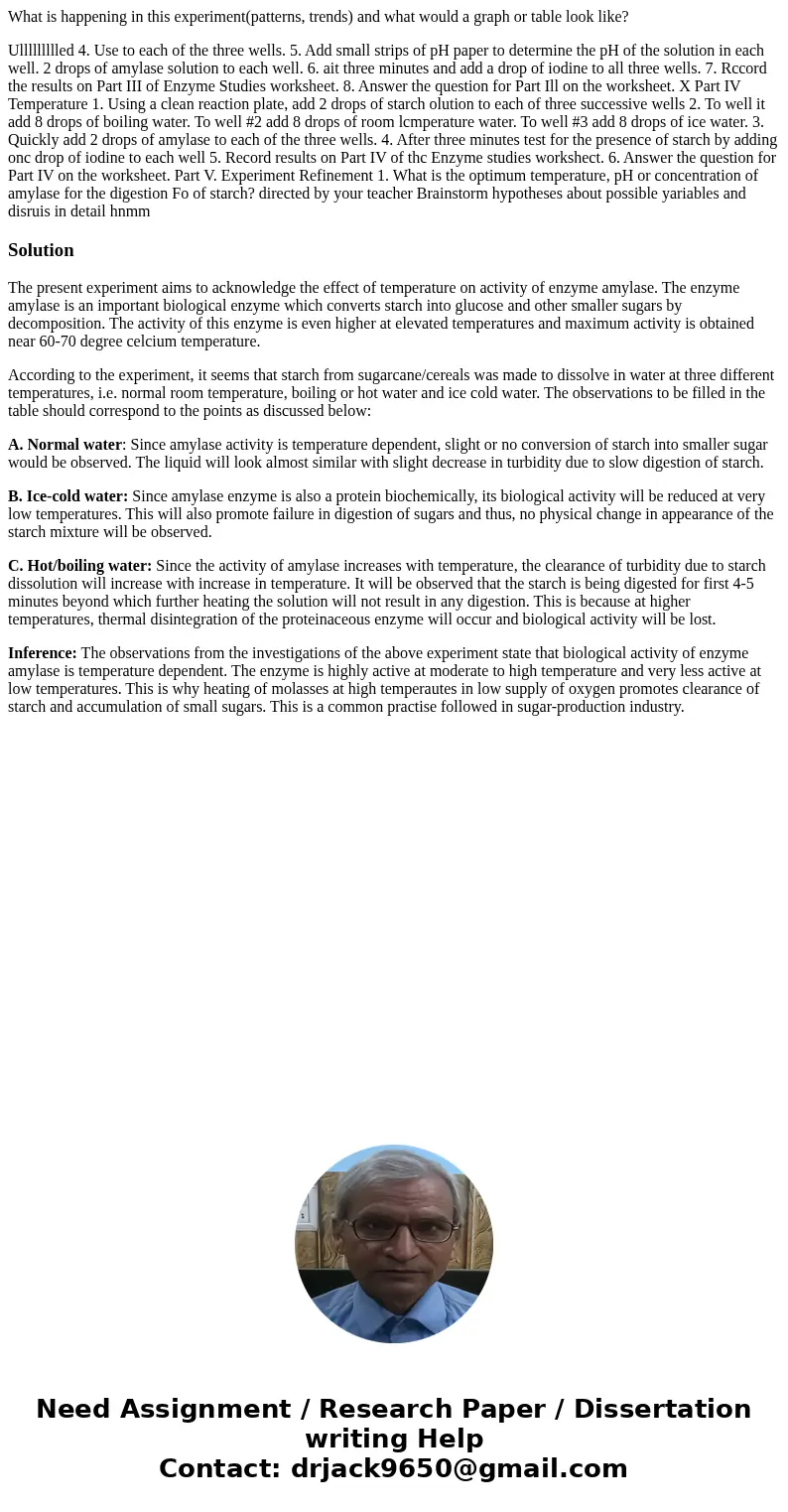What is happening in this experimentpatterns trends and what
What is happening in this experiment(patterns, trends) and what would a graph or table look like?
Ullllllllled 4. Use to each of the three wells. 5. Add small strips of pH paper to determine the pH of the solution in each well. 2 drops of amylase solution to each well. 6. ait three minutes and add a drop of iodine to all three wells. 7. Rccord the results on Part III of Enzyme Studies worksheet. 8. Answer the question for Part Ill on the worksheet. X Part IV Temperature 1. Using a clean reaction plate, add 2 drops of starch olution to each of three successive wells 2. To well it add 8 drops of boiling water. To well #2 add 8 drops of room lcmperature water. To well #3 add 8 drops of ice water. 3. Quickly add 2 drops of amylase to each of the three wells. 4. After three minutes test for the presence of starch by adding onc drop of iodine to each well 5. Record results on Part IV of thc Enzyme studies workshect. 6. Answer the question for Part IV on the worksheet. Part V. Experiment Refinement 1. What is the optimum temperature, pH or concentration of amylase for the digestion Fo of starch? directed by your teacher Brainstorm hypotheses about possible yariables and disruis in detail hnmmSolution
The present experiment aims to acknowledge the effect of temperature on activity of enzyme amylase. The enzyme amylase is an important biological enzyme which converts starch into glucose and other smaller sugars by decomposition. The activity of this enzyme is even higher at elevated temperatures and maximum activity is obtained near 60-70 degree celcium temperature.
According to the experiment, it seems that starch from sugarcane/cereals was made to dissolve in water at three different temperatures, i.e. normal room temperature, boiling or hot water and ice cold water. The observations to be filled in the table should correspond to the points as discussed below:
A. Normal water: Since amylase activity is temperature dependent, slight or no conversion of starch into smaller sugar would be observed. The liquid will look almost similar with slight decrease in turbidity due to slow digestion of starch.
B. Ice-cold water: Since amylase enzyme is also a protein biochemically, its biological activity will be reduced at very low temperatures. This will also promote failure in digestion of sugars and thus, no physical change in appearance of the starch mixture will be observed.
C. Hot/boiling water: Since the activity of amylase increases with temperature, the clearance of turbidity due to starch dissolution will increase with increase in temperature. It will be observed that the starch is being digested for first 4-5 minutes beyond which further heating the solution will not result in any digestion. This is because at higher temperatures, thermal disintegration of the proteinaceous enzyme will occur and biological activity will be lost.
Inference: The observations from the investigations of the above experiment state that biological activity of enzyme amylase is temperature dependent. The enzyme is highly active at moderate to high temperature and very less active at low temperatures. This is why heating of molasses at high temperautes in low supply of oxygen promotes clearance of starch and accumulation of small sugars. This is a common practise followed in sugar-production industry.

 Homework Sourse
Homework Sourse